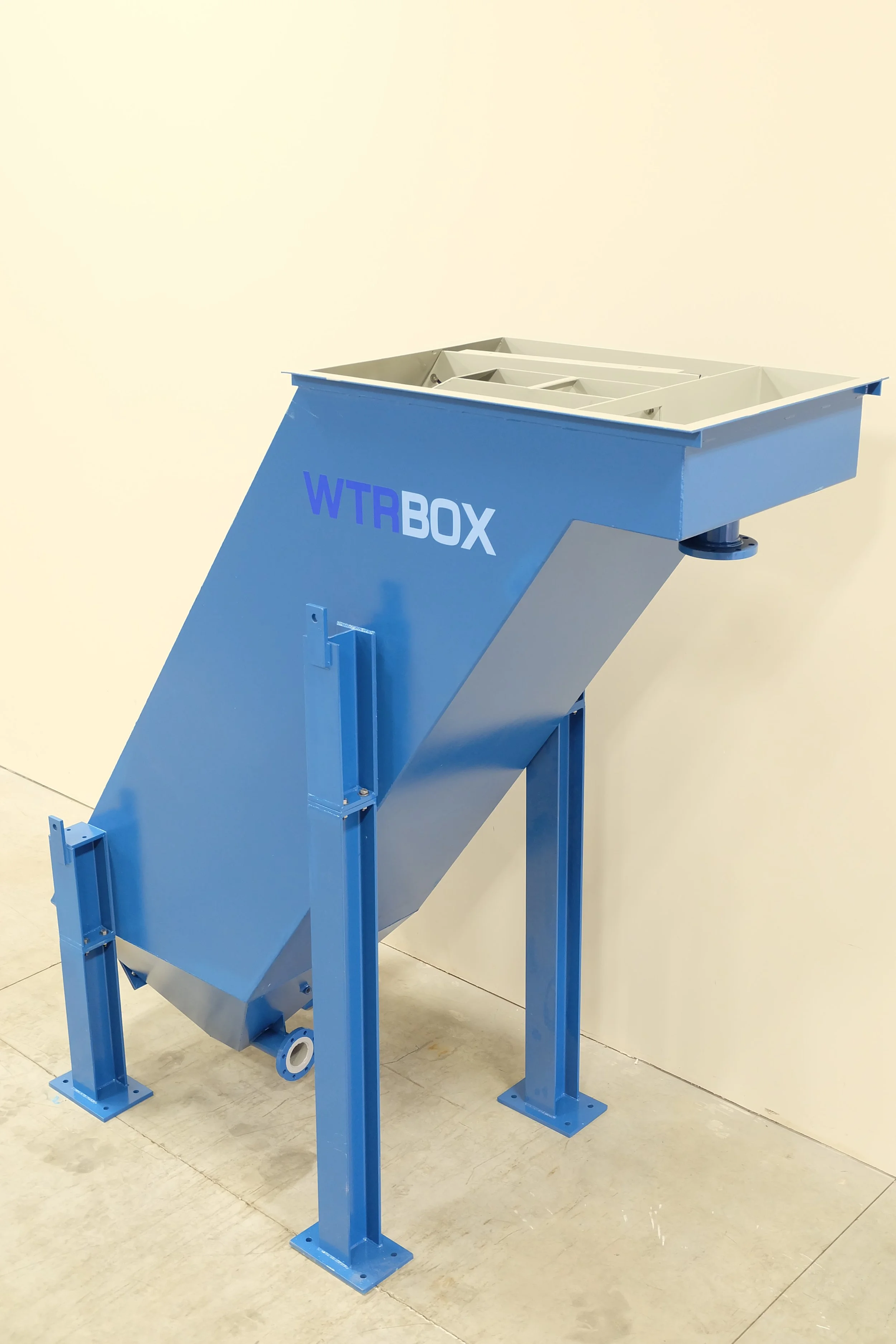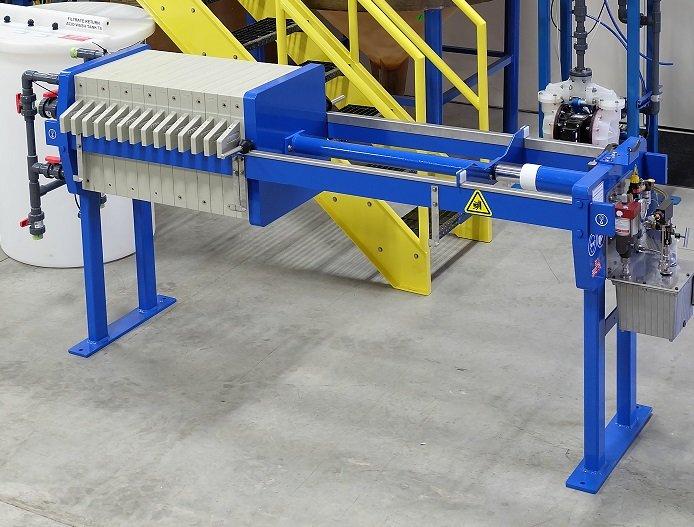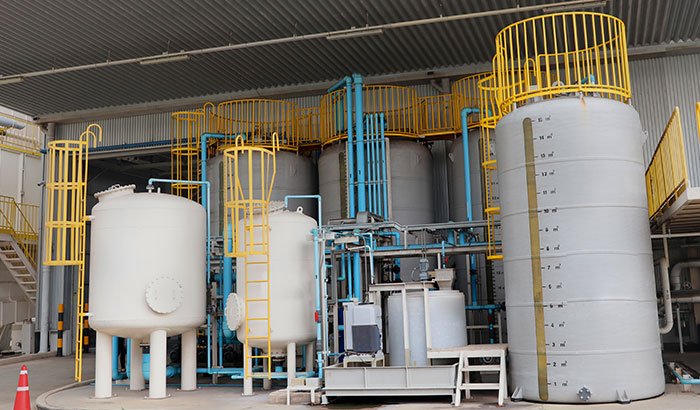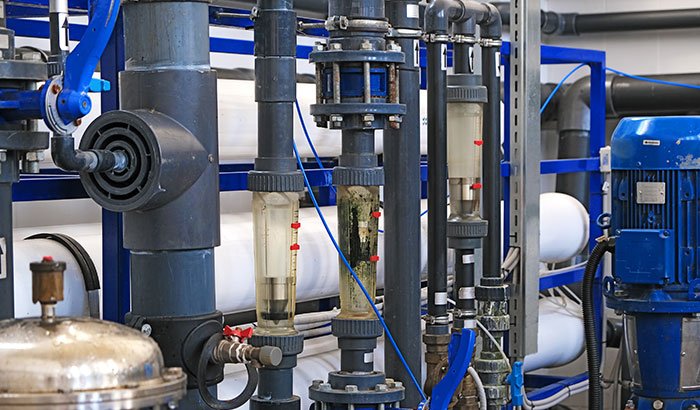Topics
-
Slant Plate Clarifiers: 5 Things You Need to Know
What Are Slant Plate Clarifiers, And What Can They Do For Me?
Slant Plate Clarifier Maintenance: Your Total Guide
Clarifier Installation: What You Need to Know
7 Benefits of Slant Plate Clarifiers You Need to Know About
Clarifier Inspections: 6 Things You Can Expect
Everything You Need to Know About Troubleshooting Issues for Your Clarifier
4 Benefits of Utilizing a Mobile Slant Plate Clarifier Rental
What Sets J Mark Clarifiers Apart?
Understanding Slant Plate Clarifier Sizing & Rating
-
-
Ways That Water Reuse and Reclamation Promote Sustainability
Everything You Need to Know About the Water Reclamation Process
Your Total Guide to Reclaimed Water
6 Benefits of Recycling Water You Need to Know About
Recycled Water vs. Reclaimed Water: What's the Difference?
3 Industrial Applications for Wastewater Reuse
Achieving Sustainability Goals with Zero Liquid Discharge: A Comprehensive Guide
-
Here's What to Expect When Using a Mobile Water System
5 Signs You Should Be Using a Mobile Water Treatment Unit
4 Benefits of Utilizing a Mobile Slant Plate Clarifier Rental
Maximizing Cost Savings: The Benefits of Water Treatment Rental Equipment
Wastewater Treatment Rentals Revolutionize Environmental Sustainability
-
-
-
Everything You Need to Know About Reverse Osmosis
What Is a Reverse Osmosis System?
What Does Reverse Osmosis Do? The Process Explained
How Does Membrane Separation Work? Here's The Process
Reverse Osmosis vs. Filtration: Here’s the Difference
Here's What to Expect When Using a Mobile Water System
5 Signs You Should Be Using a Mobile Water Treatment Unit
4 Industrial Advantages of Reverse Osmosis
Reverse Osmosis Maintenance: Your Total Guide
Wastewater Treatment Rentals Revolutionize Environmental Sustainability
How do Semipermeable Membranes Function in Industrial Applications
Understanding Reverse Osmosis Units in Cooling Tower Blow Down
The Critical Role of Industrial RO Systems: What They Filter Out
The Critical Role of Reverse Osmosis (RO) Units in Boiler Feed Water Treatment
The Versatile Role of Reverse Osmosis Systems in Industrial Water Treatment
-
Unlocking Efficiency: The Role of Neutralization Systems in Industrial Water Treatment
The Differences Between Anions and Cations
PFAS, what are They and How to Deal with Them
The Differences Between Pneumatic & Electric Actuated Valves
Everything you Need to Know About Pilot Programs
Exploring the Diverse World of Pumps: Electric, AOD, and Metering Pumps
The Role of Water Treatment in Environmental Compliance and Sustainability
Common Challenges in Industrial Water Treatment and How to Overcome Them
The Future of Industrial Water Treatment: Trends to Watch
Exploring the Diverse Markets Served by J Mark Systems
Top 5 Challenges in Industrial Water Treatment and How to Overcome Them
All You Need to Know About Filter Press Maintenance
During daily routine inspection of your filter press, you’ll want to maintain the entire system while paying close attention to the hydraulic fluid cleanliness, oil levels, the hydraulic cylinder, the power unit, and the slurry feed pump.
4 Benefits of Utilizing a Mobile Slant Plate Clarifier Rental
1. Mobile slant plate clarifiers are ideal for emergencies.
2. Clarifier rental units are great for short-term tasks.
3.Mobile clarifier units work well in industrial settings.
4. Rental clarifier units are cost-effective.
Complete Filter Press Guide: 3 Common Questions
A filter press works by accepting a liquid slurry fed under pressure thereby causing liquids and solids separation, more commonly known as dewatering. Modern filter presses use pumps to force a slurry through a stack of cloth covered plates.
Reverse Osmosis Maintenance: Your Total Guide
Reverse Osmosis maintenance is essential to ensuring that your system runs smoothly with as few hiccups as possible. When running well, a reverse osmosis system can help guarantee uniformity and increase quality output.
4 Industrial Advantages of Reverse Osmosis
There are four primary advantages of reverse osmosis: cost savings, water quality, environmental impact, and increased productivity. Let’s take a closer look.
Where Is Ion Exchange Used?
The industries that utilize ion exchange are diverse and ever evolving. They include food and beverage processing, pharmaceuticals, power engineering, metals finishing, industrial wastewater treatment and water treatment, and electronics manufacturing, among other industries.
3 Industrial Applications for Wastewater Reuse
In this blog, we will explore various industrial applications for wastewater reuse, including cooling towers, HVAC systems, energy production, and manufacturing.
How Does a Chemical Feed Tank Work?
A chemical feed tank dispenses chemicals into a fluid stream. There’s a tank that stores the chemical, a pump for moving it, a pipe for transporting it, and a metering device for controlling how much chemical is added.
How Does Membrane Separation Work? Here's The Process
Membrane separation is a critical part of wastewater treatment in many industrial settings. Today, we’re looking at how membrane separation works, so you can decide if it’s right for your wastewater treatment needs.
7 Things That Need to Happen During Ion Exchange
Ion exchange employs simple principles to deliver optimal results, making it an ideal choice for many treatment plants. Today’s blog covers ion exchange and explains seven things that happen during the process to ensure its success.
5 Signs You Should Be Using a Mobile Water Treatment Unit
Today’s blog explains what a mobile water treatment unit is and why you should use one for your industrial wastewater treatment.
Your Total Guide to Reclaimed Water
This blog will explore everything you need to know about reclaimed water, from what it is and how it's made to the many ways it can be used. We will also take a look at the future of reclaimed water and the advancements that are being made in this field.
What's the Difference Between Water and Wastewater Treatment?
To know what type of treatment is right for you, you’ll need to learn about each process in depth. Today’s blog examines both water and wastewater treatments so that you can understand them and how they differ from each other.
What Does Reverse Osmosis Do? The Process Explained
Reverse osmosis is the process of osmosis in reverse; it’s used in wastewater treatment to produce high-quality permeate free of harmful contaminants.
Everything You Need to Know About Troubleshooting Issues for Your Clarifier
While slant plate clarifiers are excellent tools for wastewater treatment for large bodies of water, sometimes issues arise that require troubleshooting. Whether those issues are big or small, troubleshooting and resolving them quickly will ensure your future ability to treat wastewater.
Clarifier Inspections: 6 Things You Can Expect
Generally speaking, slant plate clarifiers can work with very little maintenance compared with other wastewater treatment systems, making it even more ideal for busy industrial wastewater treatment plants.
7 Benefits of Slant Plate Clarifiers You Need to Know About
Slant plate clarifiers use gravity, making them a unique and cost-effective way to filter wastewater while saving energy and other vital resources. The slanted plates come with even more benefits, which we’ll discuss later in this article.
Clarifier Installation: What You Need to Know
Before installing your slant plate clarifiers, there’s some information we want you to have that will enable you to run your clarifiers properly. The details matter here since slant plate clarifiers are highly technical wastewater treatment devices.
Here's What to Expect When Using a Mobile Water System
No matter your sector within the industrial water supply industry, a mobile water system could save you time and money and help the environment. While traditional filtration systems have stood the test of time, innovations have necessitated alternative options.
6 Benefits of Recycling Water You Need to Know About
Recycled water is wastewater that’s been thoroughly treated to remove solids and impurities from the water to ensure it’s safe to use in a variety of settings. Common recycled water sources include domestic sewage, industrial wastewater, and stormwater runoff.




















